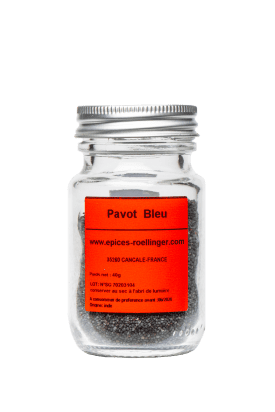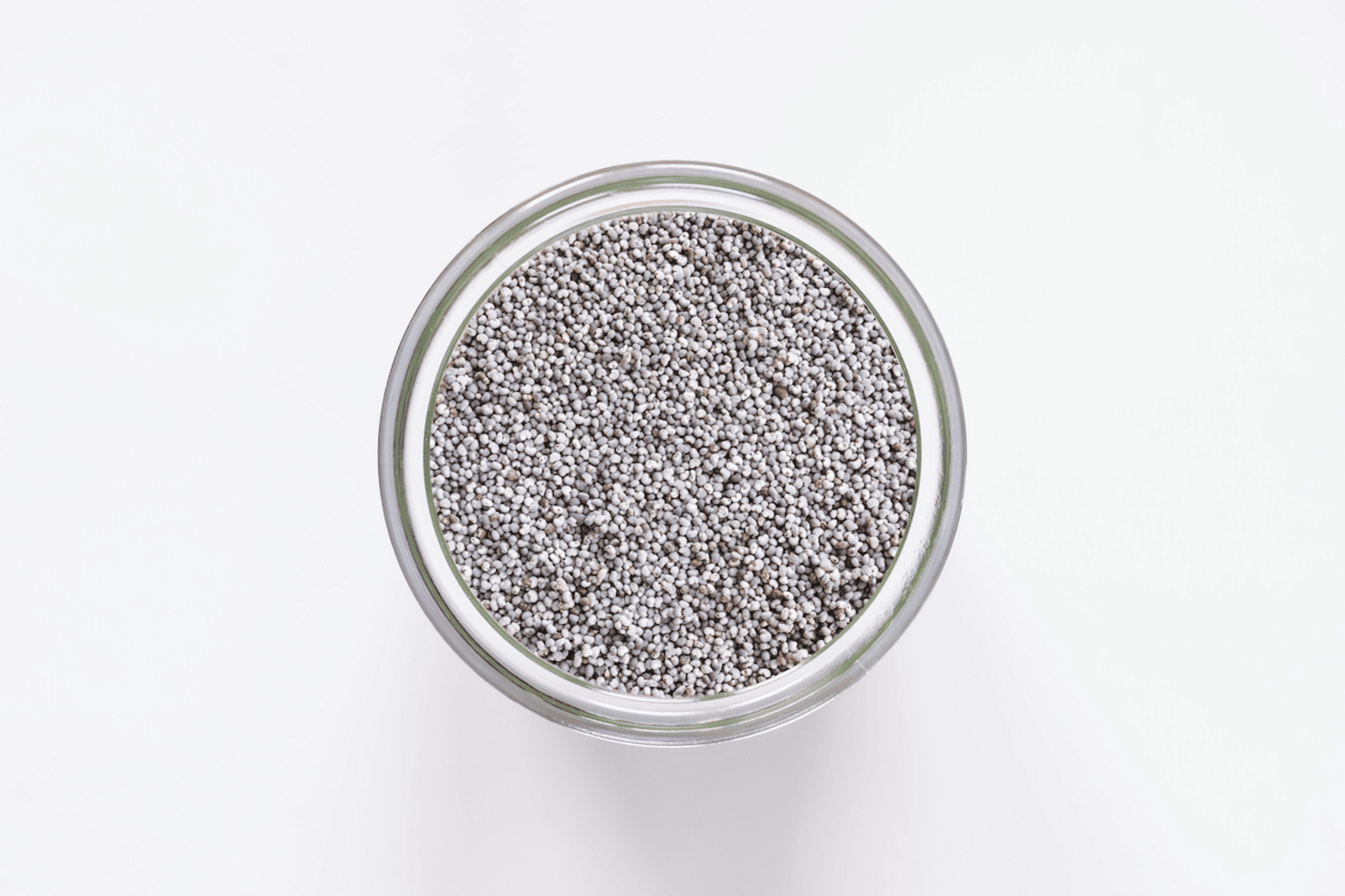Blue Poppy

Ingredients: Blue poppy seeds
Blue-gray seeds with a hint of hazelnut flavor.
€6.60
50 g
Recommendations
Use to season rolls and cookies/biscuits or sprinkle over salads, raw and cooked vegetables, and potato dishes.
-
Allergens
Absent, except for cross-contamination.
May contain traces of sesame, celery, mustard, soy. - Origin Germany
- Storage / Use In a cool, dark, dry place.
€132 / kg
Olivier Rœllinger's words
Widely used in both Oriental and Germanic cuisine, blue poppies are used to make poppyseed oil, which has a delicate, almond flavour. I particularly appreciate these grains roasted very lightly, together with sesame seeds.
Story
The opium or breadseed poppy plant (Papaver somniferum) is an herbaceous annual with white or red flowers. It belongs to the same botanical family (Papaveraceae) as field poppies. The tall poppy plants produce globe-shaped pods that contain white or blue seeds. White poppy seeds are primarily cultivated in India, while blue poppyseeds are more common in Europe.
Poppy seeds do not contain any opium. The narcotic substance is found in the plants’ green, immature pods.
Poppies are native to the Mediterranean basin. Arab merchants took them East and introduced them to Persia, India and China.
In cooking, poppy seeds are used to add flavor and texture to breads, bagels, cookies/biscuits, crackers and pastries. Poppy seeds can also be sprinkled on potatoes and raw vegetables. They pair well with cream and onions and can be added to a quiche lorraine or an onion tart.
Poppy seed and sesame nougat is a popular sweet in Turkey. In India, ground poppy seeds are added to masala sauces to thicken them, while whole poppy seeds are used to season naan flatbreads.
